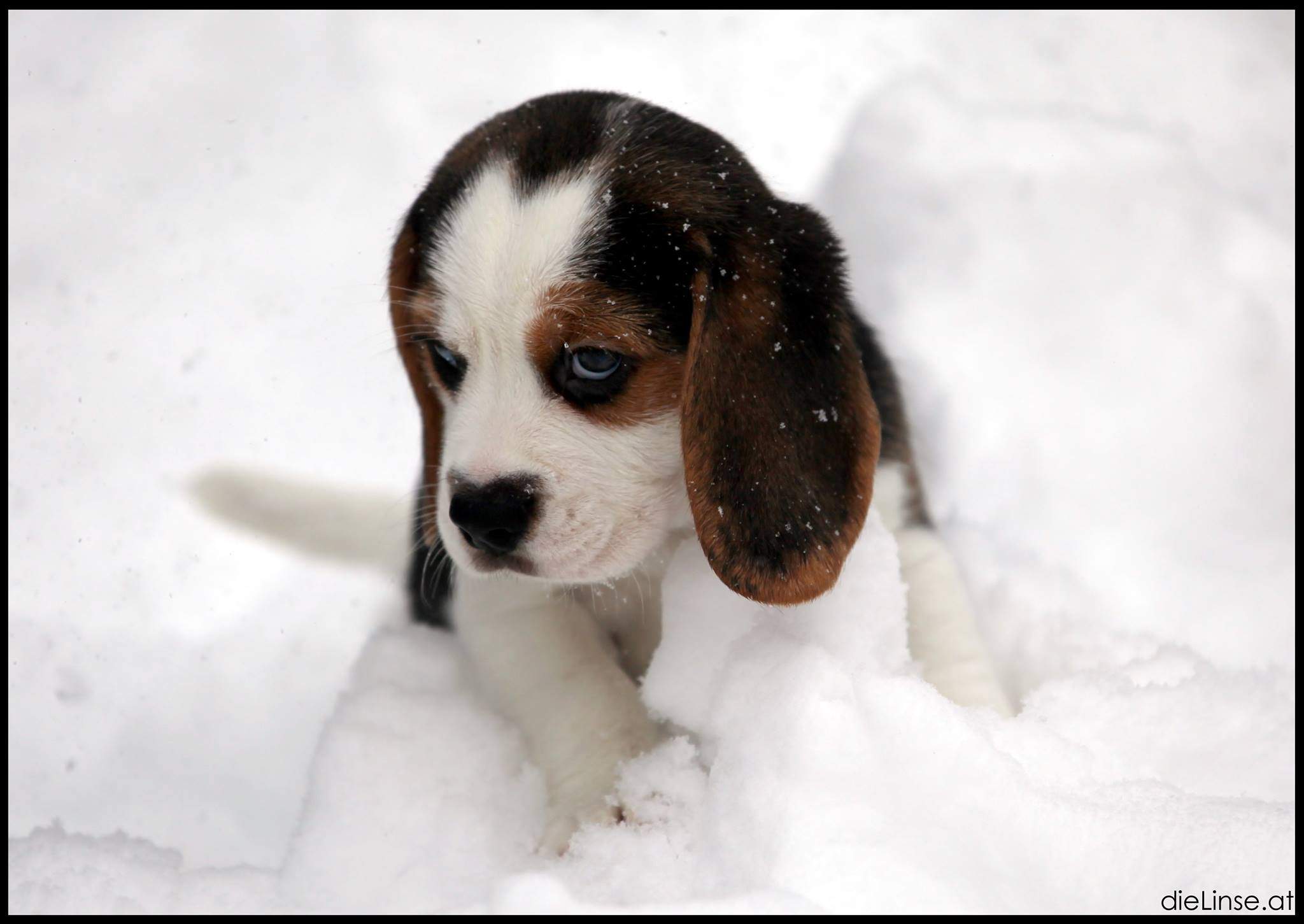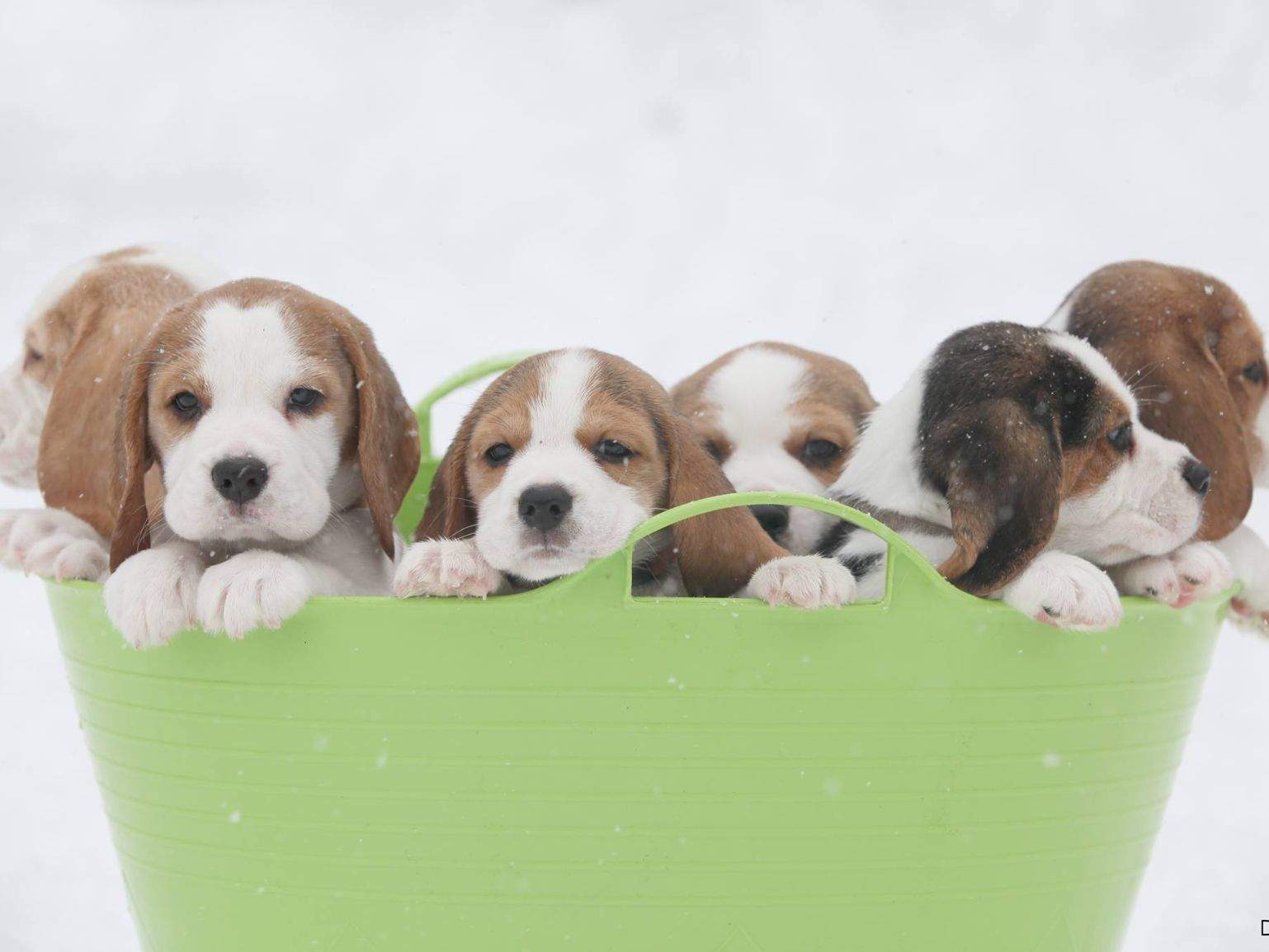- In the case of small/old/sick dogs, it is better not to walk too long and preferably not in deep snow, it is too exhausting for them and they cool down faster.
- If you walk with the Beagle in the dark, it is best to put a reflective/luminous collar or a vest on the dog so that you are clearly visible to other road users. When running loose on cloudy days or snow, the signal color also helps to see your own dog.
- Even our beagles can slip on black ice and get strains, cruciate ligament tears or broken bones. If possible, you should make sure that you avoid tarred paths on black ice and rather walk on grass, meadows or ground.
- If the beagle suddenly starts limping, there are likely chunks of ice between its toes. This is not only uncomfortable for dogs but also painful. Clumps should be removed and, if necessary, the hair between the paw pads should be shortened.
- If possible, please use paths that are not salted or covered with split chips. After every walk on salted paths, it is necessary to wash the paws with lukewarm water. Otherwise the dog will lick its paws and can ingest a large amount of road salt.
- The usual road salt consists mainly of table salt - is not toxic in small amounts, but road salt irritates the gastric mucosa and in some cases road salt can also contain antifreeze (ethylene glycol) - and this is not only very toxic, but also stimulates the dog through smell and taste to absorb even more road salt with antifreeze. Ethylene Glycol is very dangerous in just a few drops - it can cause severe kidney damage and even death!
Eating snow can cause some diseases.
- Dogs react differently to snow ingestion, some have no problem with it, others react quickly with inflammation of the gastric mucosa. The cold and especially the snow contaminated with bacteria, pollutants from the air, road salt or grit irritate the mucous membranes. Symptoms of snow gastritis: diarrhea (bloody diarrhea in severe cases), gurgling in the stomach/intestines, abdominal pain (tense abdominal wall, arched back), salivation, retching, vomiting, cough, fever.
- Snow eating can also cause acute tonsillitis. The dog perceives the inflamed tonsil as a foreign body and reacts by clearing its throat, gagging and vomiting white foam. In the case of tonsillitis, you should act quickly, because it can also become chronic and damage the heart/joints.
- A sore throat can be recognized by the cough and a stretched head and neck posture. Inflammation of the throat is both an independent and a partial disease.
- In winter it can also lead to colds - infectious diseases of the upper respiratory tract such as the nose/nasal sinus, throat & pharynx, bronchi and lungs. Viruses and bacteria present in the snow are the triggers.
- If the beagle's belly gets very wet in the snow, it can cause a bladder infection. We usually notice that the dog takes a long time to pee when we go for a walk. In bitches, you can tell that they have a bladder infection if they keep losing a few drops of urine. In severe cases, it is also painful for the bitch. Sometimes you notice drops of blood in your urine, especially in the snow. In the event of a bladder infection (and suspicion), it is best to go to the vet as soon as possible, as kidney problems can occur.
How to prevent?
Do not leave the dog in the cold car. In a parked, cold car, there is no air circulation and it is very cold. Young and very old dogs are less able to cope with the cold than healthy adult dogs.
Prevent snow eating.
No long waiting times - without exercise - outdoors and no long stays in the garden.
Keep moving – so it's better not to stop for a conversation. Hypothermia can lead to bladder/kidney inflammation.
Adapt the duration of the walks to the dog. If he's shivering badly from the cold, neither the dog nor us will enjoy a walk.
Check eyes. In winter, many dogs have eye infections from icy winds.
Playing in the snow is great, but keep fetch games short or the dog may develop a cough or tonsillitis. Sticks split very quickly in the cold and are a risk of injury.
Bathing ban but also drinking ban in water bodies.
-A winter coat can protect small dogs that are sensitive to cold. Although our beagles also have a thick undercoat (except for puppies), a coat is necessary by kidney damage, back/joint problems.
-Paw ointment protects the paws from road salt and grit. It is best to keep the fur short between the toes.
-Dogs have the same energy requirements in winter as in summer. So they don't need to be fed extra in winter. However, you can strengthen the immune system with supplements.
Maintaining a balanced rest is important - we tend to overdo the dog and over-exert them. A healthy adult dog needs 16-20 hours of rest and sleep a day.

